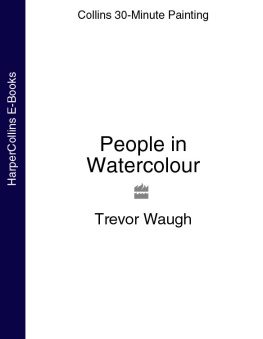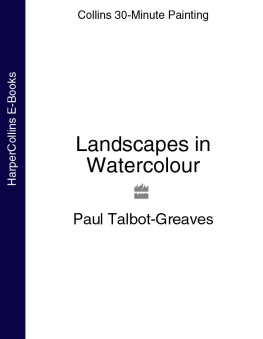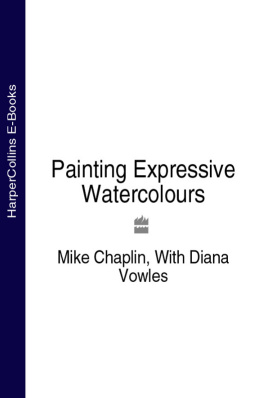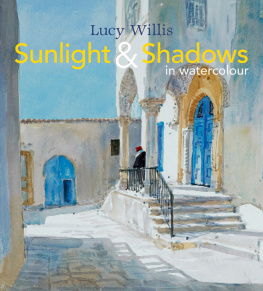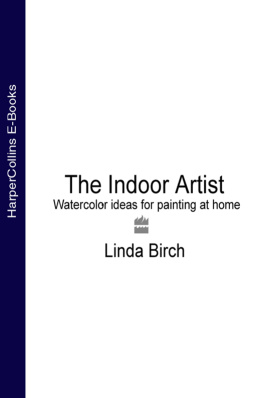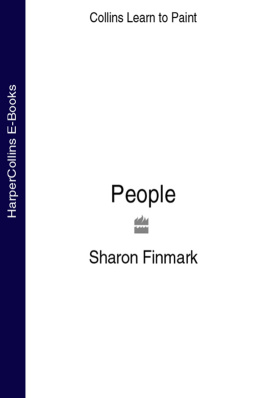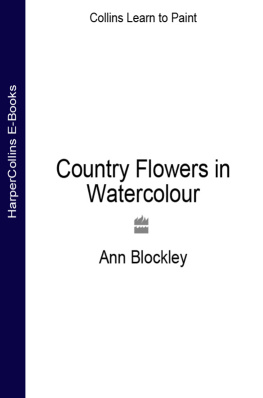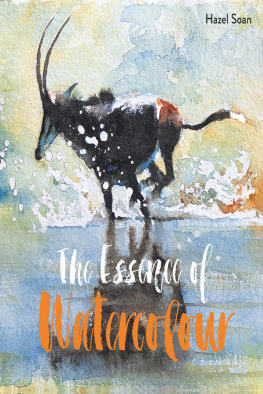
People in Watercolour
Trevor Waugh

First published in 2009 by
Collins, an imprint of
HarperCollinsPublishers
7785 Fulham Palace Road
Hammersmith, London W6 8JB
www.harpercollins.co.uk
Collins is a registered trademark of HarperCollins Publishers Limited.
Trevor Waugh 2009
Trevor Waugh asserts the moral right to be identified as the author of this work.
A catalogue record for this book is available from the British Library.
Editor: Diana Vowles
Designer: Kathryn Gammon
All rights reserved under International and Pan-American Copyright Conventions. By payment of the required fees, you have been granted the non-exclusive, non-transferable right to access and read the text of this e-book on screen. No part of this text may be reproduced, transmitted, down-loaded, decompiled, reverse engineered, or stored in or introduced into any information storage and retrieval system, in any form or by any means, whether electronic or mechanical, now known or hereinafter invented, without the express written permission of HarperCollins.
HarperCollins Publishers has made every reasonable effort to ensure that any picture content and written content in this ebook has been included or removed in accordance with the contractual and technological constraints in operation at the time of publication.
Source ISBN: 9780007284894
Ebook Edition NOVEMBER 2013 ISBN: 9780007548989
Version: 2013-10-31

Trevor Waugh was born in London and studied at the Slade School of Fine Art under the tutelage of Sir William Coldstream, Patrick George and David Hockney. Now based in Cheltenham, he exhibits and teaches all over the world. He is a founding member of the New Orientalists group based in the Middle East and his paintings appear in royal collections in the Emirates. He is a regular contributor to The Artist magazine and gives demonstrations to art societies worldwide. His paintings can be seen on a variety of greetings cards and art products. This is his fifth book for HarperCollins. For more information see www.harpercollins.co.uk.
For all my students wherever you may be. Hopefully this book will help you.
My thanks go to Cathy Gosling, Kathryn Gammon and all the team at HarperCollins for their support and encouragement with this project. To Diana Vowles, for her superb editing skills as always. Thanks also to Steve and Laki Boyer for Beach Tango and Helen for Snow at Crickley Hill. Thanks to Tim Stubbs for the photograph. Lastly to Darlas for being there, you are truly special.
Contents
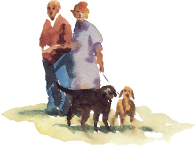
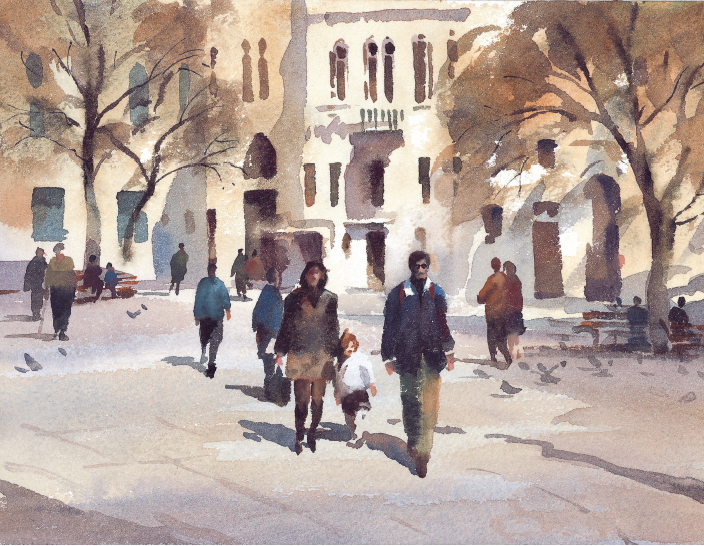
People in the Campo
18 25.5 cm (7 10 in)
This painting is a good example of a limited palette in operation, making as much use of light and dark as possible. Only six colours were used, mostly blues and browns.
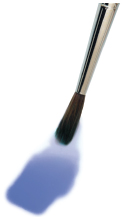
For me, watercolour is the most spontaneous and suggestive medium, and I find the whole process of painting with it an exciting journey of discovery about both the subject and myself.
Unfortunately, there are many disheartening myths about watercolour for example, that you have to get it right first time because you cant make corrections, and that painting people in this medium is harder to do than any other subject. I hope I can dispel some of these misconceptions in this book and encourage you to have a go at painting people with pleasure and fluency, enjoying the freedom and excitement that watercolour offers.
People in watercolour
It is true to say that if you cant draw it you cant paint it, so attention to your drawing skills is essential and the key to finding out how to describe people in paint. A short time spent doing some simple line drawing will help you to get your eye in before you pick up your brush. Quick sketches, taking only five or ten minutes, can also help to loosen you up and take away any anxiety about making the first marks on paper.
Look for the basic shapes of the human form and their relative sizes to one another rather than details. When you start to paint, let the colours flow naturally together and dont try to force them; corrections can take place later on. Remember that watercolour is an accidental medium, so you need to respond to the way that the colours behave on the paper.
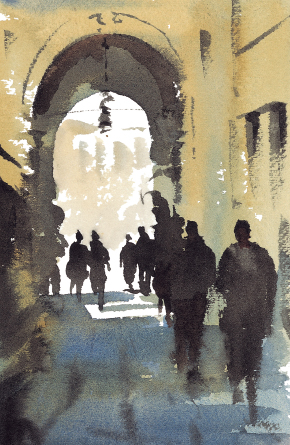
The Archway
I painted the arch and street scene first, limiting my colours to just three Raw Sienna, Cobalt Blue and Lamp Black. Finally I put in my people as silhouettes, using Lamp Black.
The aim of this book
Many artists find the human figure the most challenging subject to paint and watercolour the most daunting medium. However, my belief is that a simple approach and a step-by-step procedure will bring you rewarding results in a short space of time. Knowing what to look for in your subject and how to capture it is half the battle. If you can achieve success with simple things, this will give you the confidence to be more adventurous and stretch yourself further.
In this book you will find new ways of looking at this supposedly difficult subject, along with quick exercises and straightforward information to help you paint people successfully. You will be surprised at how much you can achieve in a 30-minute painting and the joy it brings.

Umbrella People
Using only Burnt Umber, I reduced my composition to just three tones. The white of the paper has been employed to do a lot of the work here.
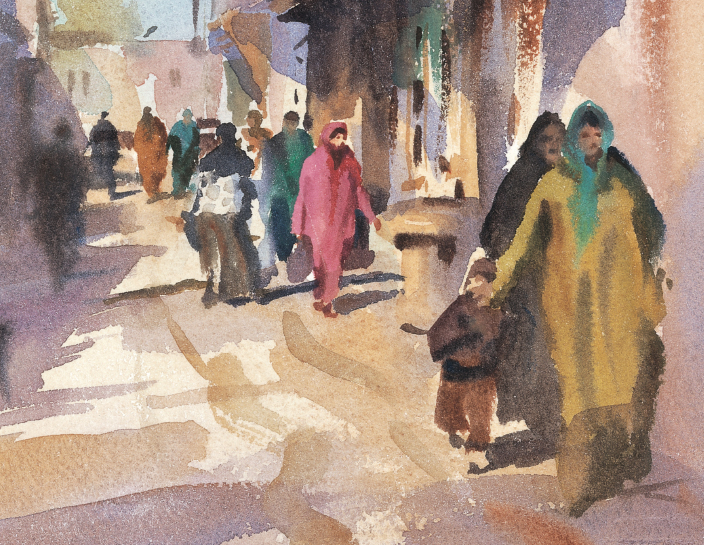
Lady in Pink
14 18cm (5 7in)
The emphasis here is on the pink dress; even though the figures in the foreground are larger they still support the figure in pink as a focal point.
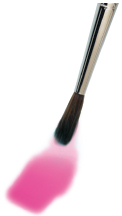
Even for beginners in watercolour, good-quality artists materials are imperative. They are more expensive but you will find that a little goes a long way, and the better results you will get compared to those from cheap materials will encourage you to keep on developing your skills.
There is a huge range of products to be found in the shops and mail order catalogues, and this can be bewildering, especially for novices. If your budget is limited, my advice is to purchase only top-quality paper, brushes and pigments, and leave items such as bags, pots, portfolios and brush-holders for another day.
Next page
